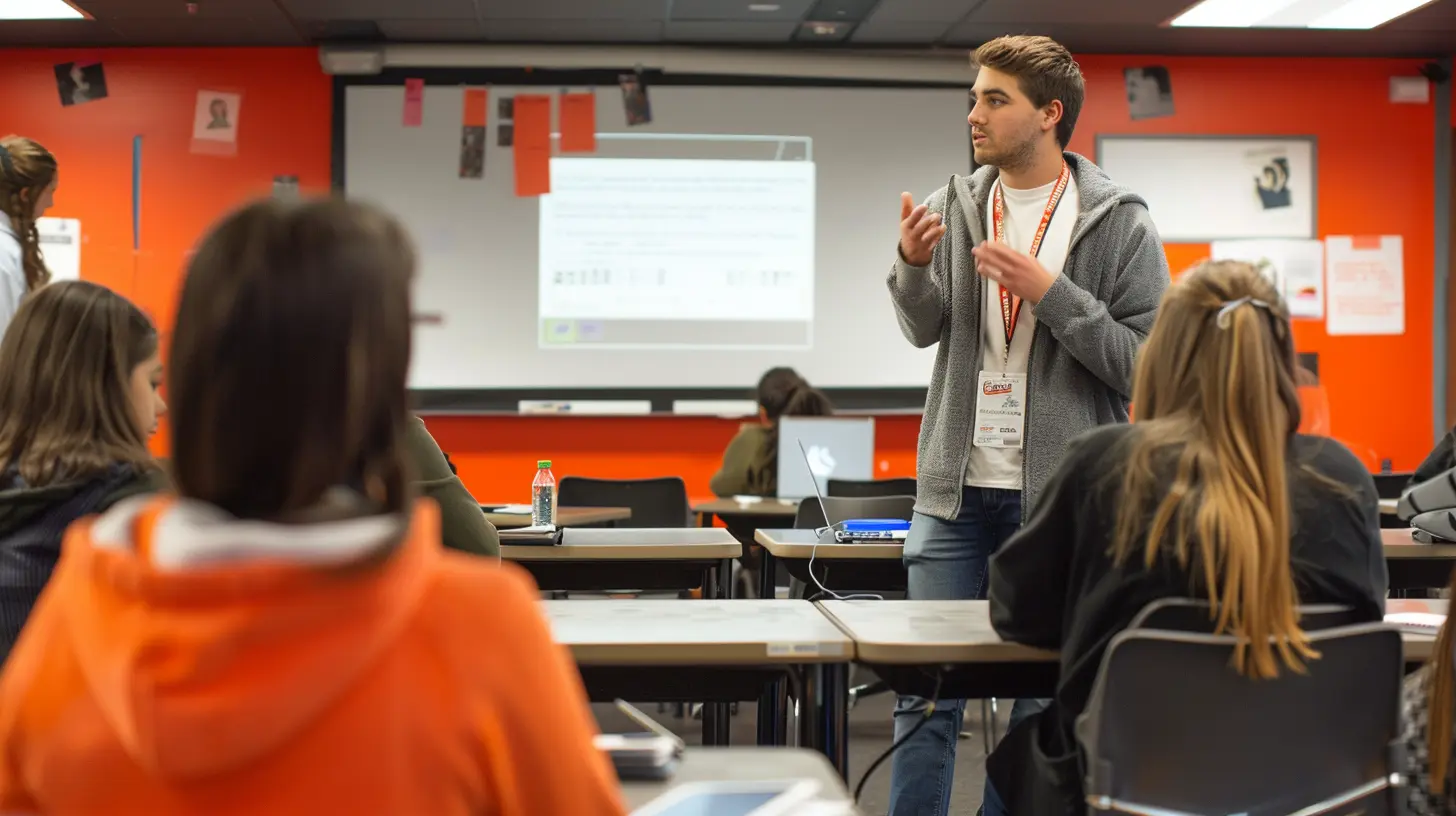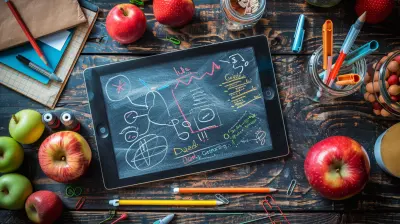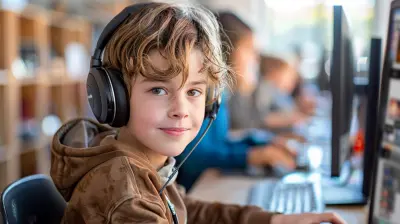Designing Flipped Classroom Strategies for Maximum Engagement
18 June 2025
Have you ever walked into a classroom and felt like the energy was completely missing? We've all been there—students distracted, staring blankly, half-listening while trying to scribble down notes. That’s the old way of learning. Enter the flipped classroom—a revolutionary method that turns traditional teaching on its head, literally.
But here’s the thing: just flipping your classroom isn’t enough. If you want to make it really sing, if you want your students to be all-in, you need to design flipped classroom strategies for maximum engagement. That’s the secret sauce. In this guide, we’ll unpack exactly how to do that.
What Is a Flipped Classroom Anyway?
Let’s get one thing out of the way—what exactly do we mean by a "flipped classroom"? It’s a teaching model where the "lecture" happens outside of class (usually through videos or readings), and the "homework" or hands-on work takes place during class time.Instead of standing in front of the class talking for an hour, teachers become facilitators of learning. Students show up having already explored the core material, and class time is spent collaborating, analyzing, problem-solving, and applying the info.
It’s not just a trend—it’s a smarter way to learn.
Why Engagement Matters More Than Ever
Think about it. When students are actively involved, they learn better. Engagement leads to deeper understanding, improved retention, and better grades. But in a flipped setup, engagement is even more important because…- Students need to self-motivate to review materials before class.
- Class time is for application, not passive listening—so it needs to be dynamic.
- The teacher shifts into the role of coach, guide, and cheerleader.
If you just dump a video on your learning management system and hope for the best—don't be surprised when nobody watches it or shows up prepared!
Step 1: Start with Clear Learning Objectives
Before you hit record on a video or design a group activity, pause. What’s the end goal?Every flipped classroom strategy starts with clear, measurable learning outcomes. Ask yourself:
- What should students know or be able to do after this lesson?
- Which parts of the content are best learned individually?
- Which areas scream for group discussion or problem-solving?
When your objectives are rock solid, it becomes way easier to decide what goes into the ‘pre-class’ content versus the in-class activities.
🎯 Pro Tip: Keep your objectives student-focused. Instead of saying, “Cover the Civil War,” frame it like, “Students will be able to explain the causes and consequences of the Civil War.”
Step 2: Create Killer Pre-Class Content
The pre-class content is your flipped classroom’s foundation. Get this right, and you're halfway there.Keep It Short and Sweet
Let’s face it—nobody wants to sit through a 45-minute video. Chunk your content into bite-sized pieces (5–10 minutes tops). Short videos are easier to digest and more likely to get watched.Mix It Up
Not every student learns the same way, so give them options:- Short videos
- Infographics
- Podcasts
- Readings
- Interactive slides
The more variety, the better.
Make It Interactive
Add short quizzes, prompts, or discussion threads alongside the content. It’s like leaving breadcrumbs—encouraging students to engage as they go.🎬 Bonus Tip: Use tools like Edpuzzle or PlayPosit to embed questions directly into videos.
Step 3: Design In-Class Activities That Spark Engagement
Alright, they’ve done their homework—now what? Your classroom becomes a stage, and it's time for your students to perform.Think Collaboration, Not Lecturing
Make your classroom a hub of active learning. Use:- Group projects
- Peer teaching
- Debates
- Role-plays
- Case studies
Let students wrestle with real-world problems or apply what they learned in creative ways.
Use the “Think-Pair-Share” Method
Ask a question, let them think alone, then discuss with a partner before sharing with the class. It works wonders for quieter students and keeps everyone on their toes.Gamify the Experience
Turn learning into a game! Use point systems, leaderboards, or challenges. Your class will light up with friendly competition.🚨 Heads-Up: Always leave room for flexibility. Don’t over-script your class. The magic happens in spontaneous discussions and unexpected questions.
Step 4: Build Accountability into the System
Here’s the kicker—if students don’t prepare ahead of time, the whole flipped model collapses. So, create gentle (but firm) accountability.Use Pre-Class Quizzes
A short quiz before class nudges students to do the work. Make it low-stakes, but enough to keep them honest.Integrate Pre-Class Work Into In-Class Activities
Make it crystal clear that the class activity depends on the prep work. If they skip it, they’ll be lost—and nobody wants to be that student.Create an Environment of Trust
Let students know why the flipped model exists. When they understand that this method actually helps them learn better, they’ll be more likely to buy in.Step 5: Leverage Technology the Smart Way
Here’s the truth: tech can either enhance your flipped classroom or become a giant headache. It's all about how you use it.Tools for Pre-Class Work
- Loom or Screencast-O-Matic for recording videos- Google Slides or Canva for interactive presentations
- Quizlet for flashcards and self-assessments
Tools for In-Class Engagement
- Kahoot or Quizizz for gamified learning- Padlet for brainstorming
- Zoom Breakout Rooms (if online) for peer discussions
💡 Pro Tip: Don’t overload your tech stack. Pick two or three tools and get really good at them.
Step 6: Foster a Growth Mindset
Some students will struggle with the independence of a flipped model. Support them.- Normalize mistakes—they’re part of learning!
- Celebrate effort, not just results.
- Offer plenty of feedback loops.
When students believe they can improve with effort, they’re more likely to engage deeply.
Step 7: Gather Feedback and Iterate
You won't get everything right the first time—and that’s okay. Ask your students:- What’s working?
- What’s confusing?
- How can I help better?
Use surveys, quick reflections, or just casual chats. Then tweak your approach continuously. The best flipped classrooms evolve.
Common Mistakes to Avoid
Let’s hit pause for a second and talk about some classic blunders.❌ Upload-and-Forget Syndrome
Just posting a video and calling it a day? Nope. Engage students with prompts, connections, or discussion points.❌ Overloading Students
More content isn’t better—it’s overwhelming. Keep it focused and aligned with learning goals.❌ One-Size-Fits-All Approach
Your students are diverse learners. Mix up the content, give choices, and be adaptable.Final Thoughts: Engagement Is the Engine
At the end of the day, designing flipped classroom strategies for maximum engagement boils down to creating an environment where students feel involved, prepared, challenged, and supported. It’s not just about flipping the order of assignments—it’s about flipping the mindset.So start small. Experiment. Be curious alongside your students. Build a learning space where they don’t just show up—they show up empowered, ready, and excited to learn.
Because when you get the engagement right? That’s when the magic happens.
all images in this post were generated using AI tools
Category:
Student EngagementAuthor:

Zoe McKay
Discussion
rate this article
2 comments
Mika McClellan
Flipping classrooms is like turning pancakes: get the right mix, and they’ll rise to the occasion! Let’s serve up some engaging learning!
June 21, 2025 at 3:01 AM

Zoe McKay
Absolutely! Just like pancakes, the right ingredients and approach can make all the difference in creating an engaging flipped classroom experience. Let's keep the learning tasty and exciting!
Maris Garcia
Great insights on enhancing student engagement strategies!
June 18, 2025 at 12:21 PM

Zoe McKay
Thank you! I'm glad you found the insights helpful!


